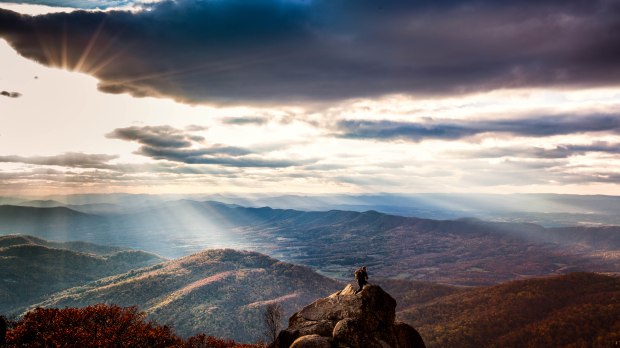So, you want to shoot a sunset while on vacation at the beach. Of course you do! What would a beach vacation be without a great sunset shot anyway? Oh wait, you are vacationing on the East Coast! The sun sets west and the ocean is on the wrong side! What do you do? Well, you could shoot the sun setting behind some grassy sand dunes. That would look pretty cool. But the Ocean is calling out for your attention. What to do? Well, you are just gonna have to shoot behind the sunset! Yup, behind it!
Get out of the box for a minute. Take a look at what you have all around you. Stand on the sand and just take a look at it. Let the sun set to the West, as it is going to do no matter what. Turn around, face east, and just look at it. Yes, I know that the ocean is there, but look at it! There is a whole lot of color going on behind the sunset. This is where you get those beautiful purple and pinks. Let the west have the orange and yellow fireball, because you have the blue water with white waves being caressed by a soft, cooler spectrum of light. And then, you get the explosion of color!
I call this the color bump. If you set up your camera well before the sunset you will be in position to witness the entire show. You will be able to watch the color bump begin quietly as it gradually rises over the course of minutes. It will reach a crescendo, after which it will rapidly vanish. The crescendo moment is when you want to hit that shutter button. The result is a very different, but just as beautiful, landscape sunset photograph to take home with you.
Here are a couple of tricks to try out when shooting an ocean landscape sunset. We all know that our photograph needs to have a strong subject, we need an interesting foreground element, and we need something in the distance to round out the “depth” of the final image. But all you have to work with here is sand, water, and sky. Hmmmmm. What to do? Give yourself some space! Lots of it! Take a look at the photography above for a moment. Yes, I know you have already looked at it! But seriously, just look at it. Again!
I have filled up most of the entire upper half of the frame with nothing but space! By doing this, I have confined the ocean’s waves to the lower half of the frame. I decided to keep all of the action of the photograph, or the energy if you will, in the lower half of the composition. This starts to create a focus. By leaving the upper half wide open, we are drawing the eye to our subject while giving it plenty of room to explore at the same time. I wanted to capture the softness of the light, to enhance its pastel like quality, so I decided to use a long exposure. This long exposure technique called “dragging the shutter” takes the high contrast details out of the waves and makes them look milky or soft. The soft white of the water complements the soft color hue of the sunset, which is our subject.
Now, notice the angle of the shore line. It moves left to right diagonally through the frame. This is called a leading line and leads you right to the subject, the sunset. Now, while you can not really see the actual sunset, you may think that it can not be our subject! Hmmmmm. Take a look at what I am using as my distant object. The color in the sky. By using just a little bit of the color in the sky (remember I left a lot of open room at the top to move around in), reflecting that same patch of sky in the water on the sand right there in front, leading a line right to it, and complementing its softness, the photograph becomes all about the color of the sunset. The photograph becomes all about telling the story of the main character, our subject, the sunset!


